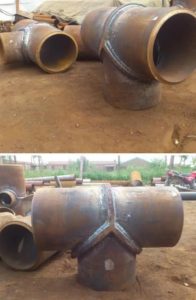What are the differences between DIN 2605 and ASTM/ASME standards?
DIN 2605 is a German standard that specifies the dimensions and tolerances for steel butt-welding pipe fittings, including elbows and bends. The standard is applicable to fittings with nominal diameters ranging from 21.3 mm to 1,420 mm, and wall thicknesses ranging from 2 mm to 120 mm.
The standard specifies the dimensions, tolerances, materials, testing methods, and marking requirements for the fittings. It also includes provisions for the design and manufacture of fittings, as well as requirements for their installation and maintenance.
DIN 2605 is widely used in Germany and other European countries, and is recognized as a reliable and high-quality standard for steel butt-welding pipe fittings. The standard is also used by many international companies that do business in Europe or with European partners.
Compared to other international standards such as ASTM and ASME, DIN 2605 has some differences in terms of dimensions, tolerances, and materials. For example, DIN 2605 specifies a different range of nominal diameters and wall thicknesses, and uses metric units instead of imperial units. However, the basic principles and requirements for the design, manufacture, and installation of steel butt-welding pipe fittings are similar across different standards, and they all aim to ensure the quality and safety of these fittings.
There are several differences between DIN 2605 and ASTM/ASME standards for steel butt-welding pipe fittings. Here are some key points of comparison:
1. Dimensions and units: DIN 2605 specifies the dimensions for steel butt-welding pipe fittings in metric units, while ASTM and ASME standards use imperial units. This means that the dimensions of the fittings may differ slightly between the standards, and it may be necessary to convert between units when using the different standards.
2. Materials: DIN 2605 specifies materials for steel butt-welding pipe fittings that are commonly used in Germany and Europe, while ASTM and ASME standards specify materials that are commonly used in North America and other regions. This means that the materials specified in the standards may differ slightly, and it is important to select materials that meet the specific requirements of the project.
3. Testing methods: DIN 2605 specifies various testing methods for steel butt-welding pipe fittings, such as visual inspection, radiographic testing, and ultrasonic testing. ASTM and ASME standards also specify testing methods, but the details may differ slightly.
4. Nominal diameters and wall thicknesses: DIN 2605 specifies a different range of nominal diameters and wall thicknesses for steel butt-welding pipe fittings than ASTM and ASME standards. For example, DIN 2605 covers nominal diameters ranging from 21.3 mm to 1,420 mm, while ASME B16.9 covers nominal diameters up to 48 inches (1,200 mm).
Overall, while there may be some differences between DIN 2605 and ASTM/ASME standards for steel butt-welding pipe fittings, they share many common features and serve similar purposes in ensuring the quality and safety of these fittings. The choice of standard to use depends on the specific requirements of the project and the regional context in which the fittings will be used.

